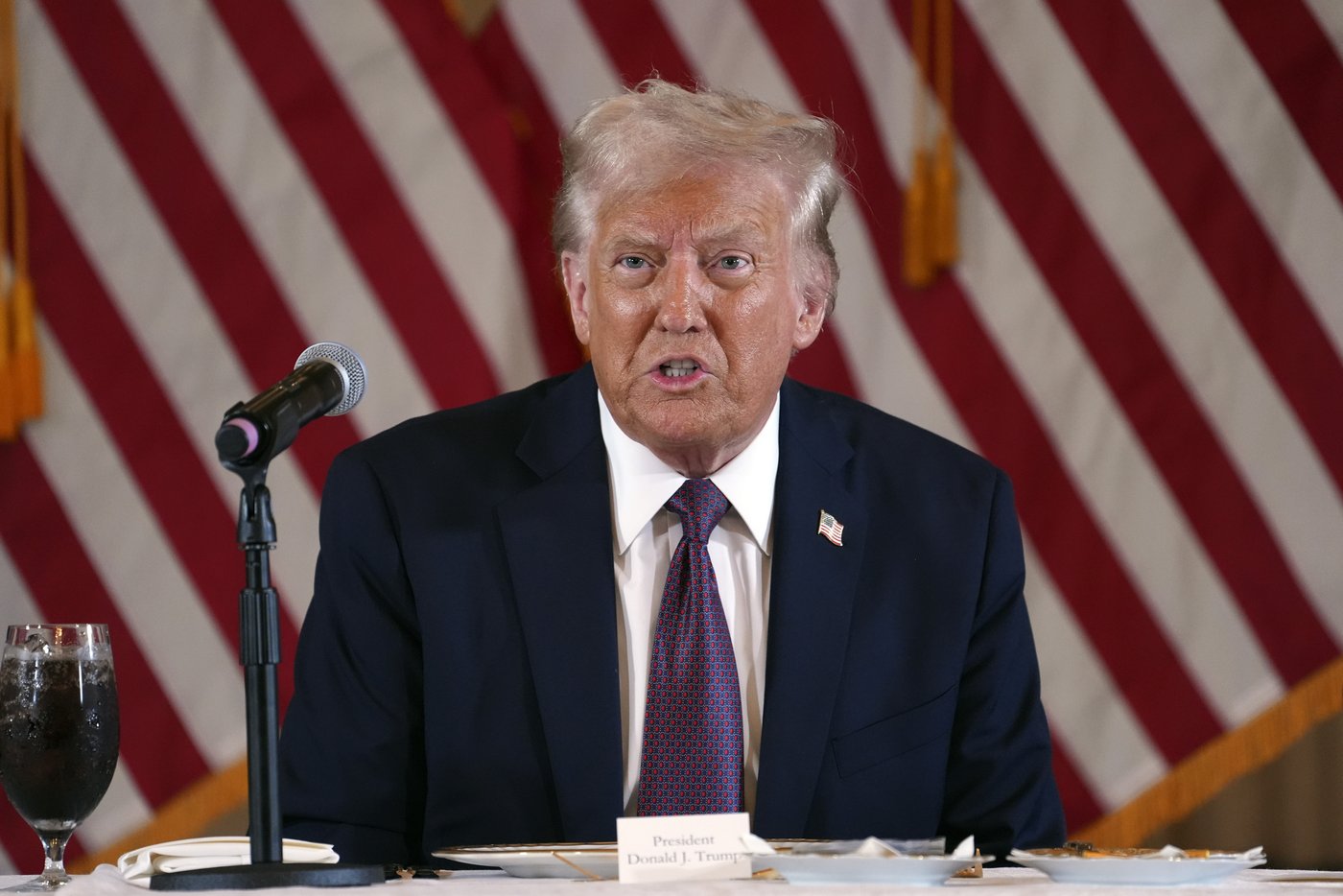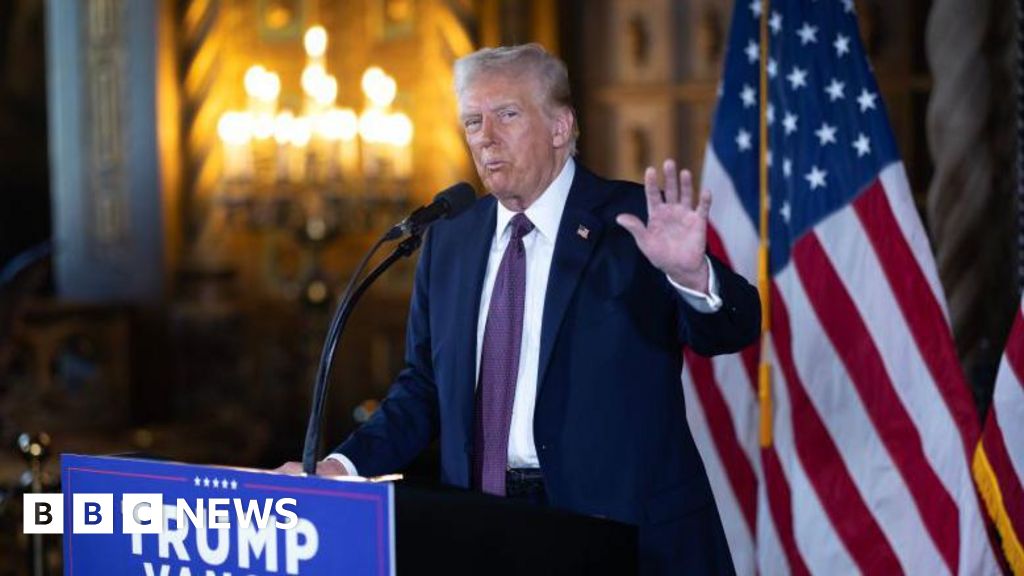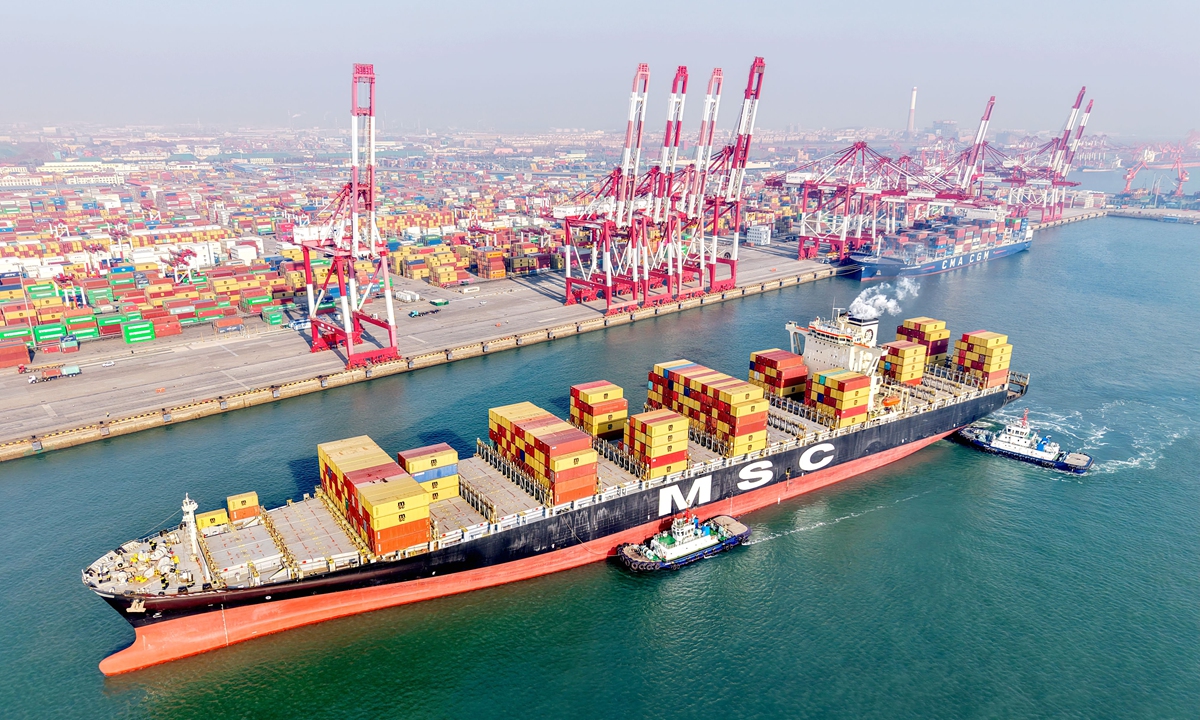To respond to U.S. tariffs, Canada should hit Trump where it hurts

Canada is on tenterhooks as Donald Trump prepares to be sworn in as 47th President of the United States of America. The main source of anxiety is the near certainty that Trump will impose tariffs on all or some Canadian exports, as soon as inauguration day. It’s possible he will make good on his wild threat, first uttered in late November, of a 25 per cent tariff on all Canadian and Mexican imports.
President Trump at first tied his tariff threat to unspecified demands on both countries related to border security, illegal drugs and migration. However, since November, he has also complained multiple times about Canada’s defence spending and the Canada-U.S. trade deficit, which he grossly exaggerates and misleadingly refers to as a U.S. subsidy, sowing confusion about his plans and ultimate goals.
Even if Canada avoids a bilateral 25 per cent tariff, it’s still possible Canadian goods will be covered by Trump’s threatened global 10 or 20 per cent tariff on all U.S. imports. Trump’s economic advisory team is reportedly considering phasing in the global tariff by two to five per cent a month in an effort to temper inflationary pressures from the tariffs in the U.S.
In any of these scenarios, punitive tariffs on Canadian and Mexican goods—even the threat of tariffs alone—would make a mockery of the renegotiated North American free trade deal, called CUSMA in Canada. As a tool for achieving policy change in either country, such threats represent overt economic coercion of the kind generally reserved for enemy states and frowned upon by international law.
Canada and Mexico would have no choice but to respond forcefully to U.S. tariffs while protecting workers and domestic firms from their fallout. The threatened 25 per cent tariff would have a significantly negative impact on the Canadian economy almost immediately, even if there were a grace period before the tariff kicked into place. The threat of tariffs alone puts Canadian jobs at risk by undermining domestic and foreign investment in Canada.
The federal government assures Canadians it is ready to respond. Government officials have floated plans for retaliatory tariffs matching and likely exceeding those introduced against certain U.S. imports in response to the first Trump administration’s tariffs on steel and aluminum imports in 2018. They have also warned the incoming Trump administration about potential energy and mineral export restrictions, an idea supported by all but one of Canada’s premiers.
It is neither feasible nor desirable for Canada to try to mirror U.S. tariffs with matching charges on U.S. imports entering Canada. In the worst-case scenario of a 25 per cent tariff on all Canadian imports to the U.S., a perfectly reciprocal response could worsen the situation in Canada by increasing consumer prices, compounding costs for business and chasing away private investment in the economy.
Canada should respond with maximum force and minimum harm to Canadian jobs and inflation through a combination of retaliatory tariffs and strategic export taxes on energy and natural resource exports to the U.S.
Export taxes on U.S. imports of essential resources and industrial inputs would allow trade to continue through a trade war with the U.S., preserving Canadian jobs. By quickly hitting U.S. corporate profits, these taxes may put pressure on the Trump administration and congressional Republicans to lower any potential tariffs or back away from coercive demands that Canadians cannot and should not have to meet.
A 25 per cent export tax on energy (oil and gas) exports alone would net more than $40 billion a year at current prices and trade levels— money that could offset the costs Canada and the provinces would incur to manage the economic shock from the tariffs. Applying a similar tax to Canadian exports of uranium, potash, natural gas and perhaps aluminum could raise billions more while straining corporate profits in the U.S.
For added effect, Canada should seek to coordinate any response to potential tariffs with the Mexican government and other impacted countries. Not only would a coordinated international response compound pressure on U.S. business, which is currently dependent on many Canadian and Mexican inputs, but it would set a positive precedent for difficult negotiations with the U.S. over the future of North American trade.
The cost of retaliation
Canada exported about $543.61 billion CAD of goods to the U.S. over the 12 months ending November 2024. A 25 per cent tariff on this trade, as Trump threatened in November, would net $135.9 billion CAD for the Trump administration over the course of a year (in a scenario in which bilateral trade is otherwise not affected).
The federal government says it is preparing countermeasures including surtaxes (import duties) on U.S. goods entering Canada, similar to those rolled out in 2019 in response to the first Trump administration’s 25 per cent tariff on Canadian steel products and 10 per cent tariff on aluminum imports. Those counter-tariffs affected just over $16 billion worth of imports from the U.S.
According to reports, Canada’s first wave of retaliatory tariffs would hit $37 billion worth of U.S. imports, with the option of applying a second round of tariffs to $110 billion worth of goods at a future date. This suggests Canada is willing to tax just under half of all imports by value from the U.S. with tariffs of some still unspecified level.
This may be as far as Canada is reasonably able to go in a tariff-based retaliation alone. A matched 25 per cent tariff on all U.S. imports could theoretically force a more rapid retreat from Trump while netting over $86 billion in import duties for Canada. But it would also have an immediate inflationary impact, notably on basic consumer goods Canadians rely on, including many foodstuffs.
A fully reciprocal tariff affecting automotive trade would be particularly damaging to the North American–based Canadian automotive sector, where parts cross the border multiple times during assembly and competition with companies based outside of North America is fierce.
The Canadian automotive sector is already vulnerable to capital flight based on Trump’s tariff threats alone. Trump has said there is no reason why Americans should buy any cars or lumber made in Canada. “We don’t need anything they have,” said Trump from his Mar-a-Lago resort recently.
For all these reasons and more, simply matching Trump’s tariffs with our own is not a palatable or sensible option.
Squeezing U.S. margins through export taxes
Retaliatory tariffs, on their own, may not deter the Trump administration or sufficiently enhance Canada’s negotiating position. A more effective tool for meeting Trump’s tariff threat head-on would be a one-two punch of retaliatory tariffs on U.S. products that are easily replaceable (for industry) or readily available (for consumers) in Canada, plus taxes on Canadian exports that the U.S. economy needs and would have a hard time replacing.
Export taxes (sometimes called export levies) work differently from import duties (tariffs or surtaxes). In the case of import duties, a Canadian company that wants to import a U.S. product would have to pay a proportion of its value as a duty to the Canada Border Services Agency. That cost could be absorbed by the importer or passed on to the ultimate buyers of the imported good, be they manufacturers, retailers, or individual consumers.
Export taxes are a common tool used by countries around the world to achieve various economic, environmental or national security goals. Most often, export taxes are a means for securing domestic supplies of a good or commodity that is in high demand on the global market. However, they can also be a source of government revenues. Modest export taxes on palm oil in Indonesia and Malaysia aim to encourage domestic refining, for example, while Indonesia’s tax supports plans to increase domestic use of biodiesel manufactured using palm oil. Canada has historically applied export duties to logs and pulpwood where those products face an import duty. The federal and provincial governments have also banned the export of unprocessed goods like seafood to support domestic upgrading into higher value-added products.
You may be asking why Canada would tax exports that may already be facing a 25 per cent import tax in the U.S. Wouldn’t this just compound the economic pain in Canada? The answer would be yes in many cases, but probably not when it comes to certain natural resources and industrial inputs U.S. companies need and would have a difficult time sourcing from other countries.
Contrary to what Trump said in Mar-a-Lago, the U.S. economy currently depends on many products from Canada that would be difficult for U.S. companies to source elsewhere. This creates significant leverage for Canada in a potential trade war with the Trump administration, though export taxes would need to be managed carefully based on short-term and long-term considerations.
The U.S. imports 27 per cent of its uranium from Canada, for example. The next biggest share of uranium for the U.S. comes from Kazakhstan (25 per cent), which is being pulled into China’s geopolitical orbit. The U.S. cannot easily or quickly replace Canadian uranium, in other words. Even if it could, Canadian suppliers would find other global buyers. This makes a uranium export tax a safe bet for Canada.
Oil is another good target for a retaliatory export tax. About 60 per cent of U.S. crude oil imports come from Canada. Over 100 U.S. refineries are specifically designed to process heavy oil and would need considerable time and money to retool. There are no ready alternatives for this product outside of Mexico (which will presumably face similar tariffs to Canada) or Venezuela, which would be a non-starter for most Republicans and Democrats alike.
Canadian exports of unwrought, unalloyed aluminum account for about 70 per cent of all U.S. imports of the key industrial input and Canada is the top source of all aluminum products to the U.S. Other suppliers exist, but it would take some time to bring them online. Even a modest export tax on Canadian aluminum would send ripples through U.S. supply chains in transportation and construction reminding them of the interdependence of the North American market.
Potash provides another compelling case for export tariffs. Almost 90 percent of U.S. potash, an essential component in fertilizer production, come from Canada. This supply is so important for the U.S. agricultural sector—and alternate sources Russia and Belarus so politically poisonous—that it is likely Trump would exclude potash from potential tariffs on Canadian imports.
In this case, the impact of Canadian export taxes would be highly disruptive for the U.S. with minimal impacts on trade flows. Likewise, while the U.S. is a net exporter of natural gas (a key ingredient in chemicals and plastic production), almost all its gas imports come from Canada. Natural gas is an essential resource for residential and industrial power generation and, importantly for winter, heating.
U.S. demand for these key Canadian exports is inelastic, meaning demand is unlikely to change much even with price fluctuations. An export tax would therefore not likely affect the flow of Canadian trade to the U.S., but it would raise costs for U.S. buyers, including crude oil refineries, nuclear power plants, agriculture, downstream industries reliant on natural gas (e.g., chemicals), and U.S. manufacturers reliant on Canadian aluminum.
Export taxes on strategic resources would have an immediate impact on corporate profits with the aim of shortening a potential trade war with Trump. Most of the negative impacts, at least initially, would be borne by U.S. companies, consumers and, unfortunately, workers. Hopefully, this would put pressure on the Trump administration to quickly come to an arrangement with the Canadian government that both countries can live with.
Over the longer term, additional costs to companies—some of which are the same on both sides of the border—from an export tax could spill over into price increases in Canada. This is not a reason to avoid export taxes but to develop them carefully, so that they have maximum effect in the U.S. and minimal effect on Canadian workers and businesses.
The added benefit of an export tax is that it could raise significant revenues for the Canadian government. A 25 per cent export tax on energy alone (oil and gas) would net the federal government just over $40 billion a year based on current exports to the U.S. The feds could put some of this money toward workers and companies whose livelihoods would be quickly threatened by U.S. tariffs.
Preparing for a short and long-term trade war
The federal government is apparently preparing a two-stage response to Trump’s potential tariff plan, mainly based on retaliatory tariffs but with the potential for export restrictions on energy and critical minerals down the road. The risk in this gradualist approach is that it could unnecessarily prolong a trade war.
It is in the best interest of workers and businesses in this country for the federal government to cut to the chase—to come to an arrangement with Trump that puts an end to any tariffs without compromising Canadian independence. Export tariffs on natural resources and other key industrial inputs will create economic pain mainly for U.S. companies to begin with, creating pressure on the Trump administration to negotiate their removal.
The Alberta government is strongly protesting the idea of resource restrictions or taxes. Instead, Premier Danielle Smith seems more interested in preserving the corporate profits of Alberta’s largely foreign-owned oil sector than of contributing to a strong, all-of-Canada retaliation to Trump’s illegitimate threats to his top trading partners.
Smith and other premiers and business associations have proposed appeasing Trump’s demands and forging a new energy bargain with the U.S. as alternatives to standing and fighting. This is the wrong policy.
Canadians are not amused with Trump’s repeated threats to make Canada a U.S. colony and will expect a forceful response. The Trump administration needs to know there will be no benefit to the U.S. from future economic coercion against its North American allies. Premier Smith may protest, but international trade is squarely the domain of the federal government, and export tariffs a common tool in the international trade universe.
Export taxes on energy would show Trump we are serious about defending our sovereignty. Canada’s use of both retaliatory tariffs and export taxes or export restrictions—limiting the flow of energy or critical minerals to the U.S.—would be fully compliant with World Trade Organization rules and could be justified in a CUSMA dispute as responses to the threat to Canada’s essential security that Trump’s 25 per cent tariff would create.
For maximum effect, however, Canada should coordinate whatever retaliatory strategy it develops with Mexico, the European Union and other countries. The U.S. economy is in a better position than either Mexico’s or Canada’s on their own to weather a prolonged trade war. But even Trump would find it difficult to justify a two- or multi-pronged counterattack from America’s largest trading partners.
The author thanks David Macdonald, Jim Stanford and Scott Sinclair for their helpful comments in preparing this article.
link






